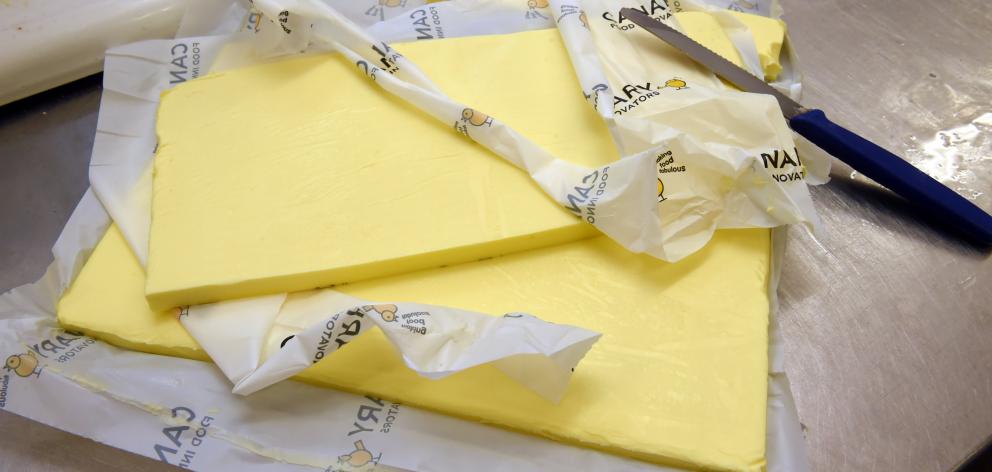
Looking at the year ahead in the bank’s latest Rural Wrap, Mr Steel said the clear down-side risk was ongoing disturbance in global financial markets, foretelling a sharper world economic slowdown than anticipated.
That would most likely see softer international pricing, although the New Zealand dollar would be expected to weaken and soften the blow to domestic farmers in that scenario.
But assuming an orderly economic slowing offshore, the bank saw the combined positives of structurally improving food demand in China and some supply tightness as enough to generate some price improvement.
There would also be some initial benefits from the CPTTP trade pact filtering through this year.
The world economy certainly looked to be at an interesting juncture. It was slowing and the question was how far and how fast, Mr Steel said.
The bank expected further slowing in global growth through 2019, which would be a headwind for primary product prices.
That should not really be a surprise, after such a long period of expansion but it did not back the view of some that a deep downturn is imminent.
Some agreement between the US and China on trade over coming months was possible, which would help lift the general mood and outlook. So, too, would policy stimulus from Chinese authorities, and some was already appearing.

A US recession or significant global economic slowdown, if it were to occur, would be materially negative for primary product prices.
For now, demand for New Zealand’s primary products had been holding up well, underpinned by China.
That was highlighted by China’s market share rising for nearly all of New Zealand’s major primary export products over the past 12 months.
That was despite a cooling in China’s macroeconomic indicators. It suggested the positive structural forces of food demand in China had been outweighing cyclical economic softness.
"We expect more of the same in 2019, assuming further slowing in Chinese economic growth is orderly."
For agricultural and forestry products overall, China accounted for around 28% of New Zealand exports.
Some of the biggest Chinese market share changes over recent times, including last year, had been in the meat sector.
China now took 30% of New Zealand’s sheepmeat exports and 24% of beef exports. Ten years ago, those shares were 3.2% and 0.1% respectively.
Most recently, African swine fever in China might have generated extra demand for imported meats, including beef and lamb, as consumers looked to replace any shortfall in domestic pork supplies.
Gains in China’s market share for New Zealand sheepmeat had coincided with the UK’s share dipping sharply post the June 2016 Brexit vote. The EU’s share had drifted lower.
What happened to New Zealand’s European sheepmeat quota was one important aspect to watch when, or if, Brexit occurred.
"At least maintaining current market access to the individual UK and EU markets could prove important if the Chinese market were to stumble," he said.
Despite the trials and tribulations lurking offshore, it was important to recognise not all was negative and uncertain on the international trading front.
The CPTTP had just come into force. Officials estimated that had the potential to ultimately deliver $222 million per year in tariff savings for New Zealand once it was fully implemented over coming years.
And the Government was looking to advance negotiations with the EU and RCEP group of countries while also making progress with upgrading the trade deal with China.
Global dairy prices had "regained their mojo", and GlobalDairyTrade prices lifted more than 11% over the four auctions to mid-January. That followed a downtrend in 2018 and was despite strong New Zealand production which BNZ expected to be up 5% on last season.
Flat EU milk production and the previously massive EU stockpile of skim milk powder rapidly depleting to zero was boosting prices. SMP had jumped sharply and Chinese demand had been strong.
BNZ had nudged its 2018-19 milk price forecast up from $6 to $6.25. That included some further dairy product price gains offshore.
There was up-side risk if EU milk production continued to struggle and down-side if China’s economy were to slow sharply, Mr Steel said.
The "spring" might just be coming out of lamb prices as supply tightness eased a little. New Zealand lambs would be available in volume, as good growing conditions had encouraged so many farmers to keep lambs on farm to date.
And the lamb crop report 2018 report from Beef + Lamb New Zealand showed a 0.7% drop in lamb numbers was a smaller drop than some previous estimates.
But looking over the coming year or two, supply was expected to remain relatively tight. BNZ forecast operating prices in 2018-19 to average around $7.60kg, a few percent higher than last season’s very strong $7.40. Brexit remained a "wildcard".
US beef prices had improved over the past month after trending lower in 2018, a sign that demand was no longer being overwhelmed by supply.
Meanwhile, Chinese demand continued to expand, driving a rapid increase in its share of New Zealand beef exports.
China now accounted for 24% of New Zealand’s beef exports, up from 16% two years ago. Elsewhere, the CPTTP trade deal would result in the benefit of lower tariff costs filtering through. Beef prices in 2018-19 were expected to be a few percent below last season, given 2018’s declines.
The annual value of log, wood and wood article exports had been a strong march higher over recent years. At more than $5.2 billion in the year to November 2018, exports had lifted by more than $1 billion in he past two years alone.China remained the major buyer offshore and increasingly so. Growth there remained positive but continued to slow. Some indicators suggested the slowdown was accelerating.
Downward pressure on forestry prices was not a given. Stock levels were reportedly low Chinese authorities were loosening policy, but prices were something to watch. Domestic construction forecasts remained buoyant.













